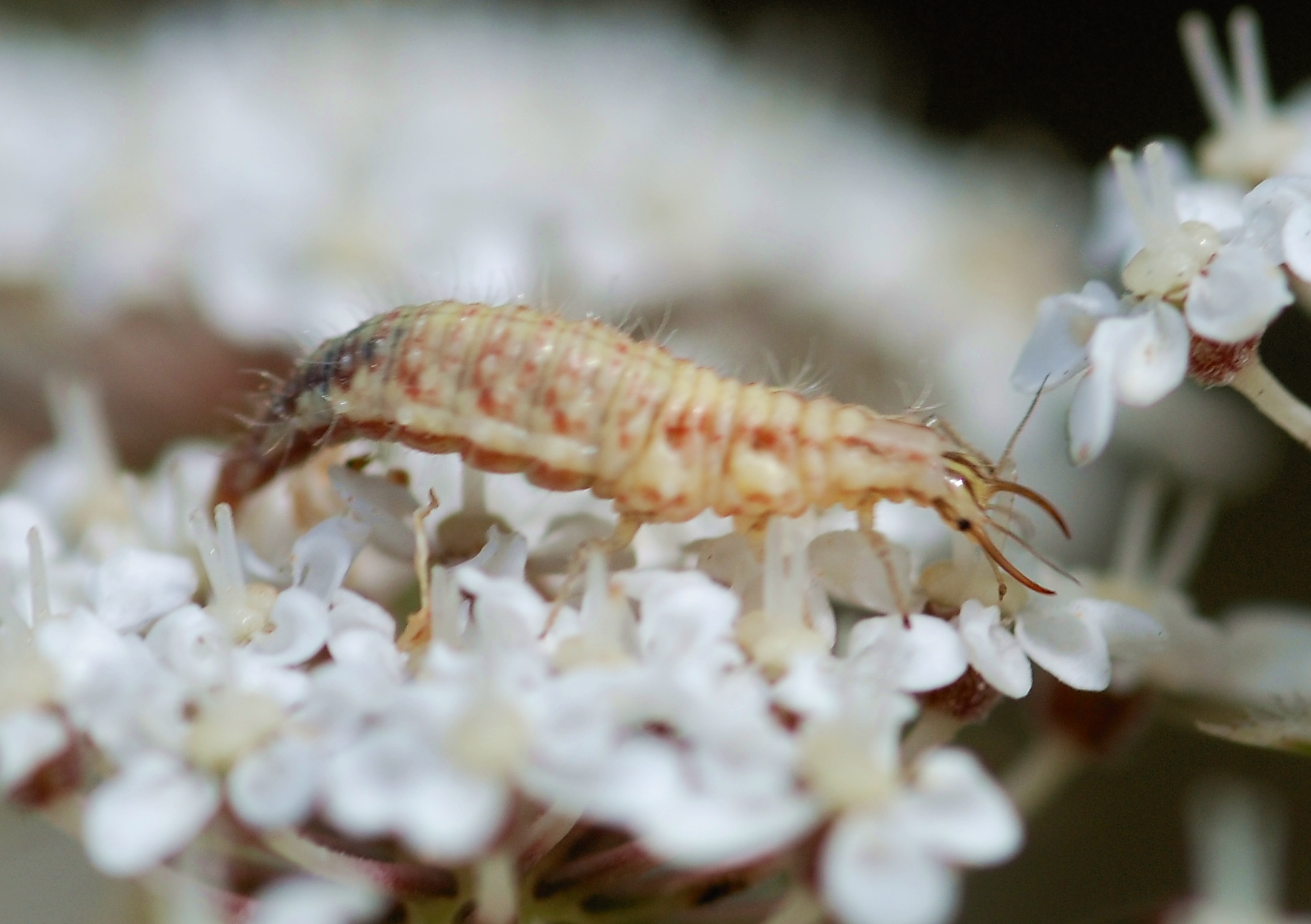The Green Lacewing
The Green Lacewing is a common flying insect that is beneficial in the garden with an appetite for aphids and other small soft bodied pests.
is a common flying insect that is beneficial in the garden with an appetite for aphids and other small soft bodied pests.
Below I have shared some detailed information about them I have obtained from wikipedia.
Green lacewings are delicate insects with a wingspan of 6 to over 65 mm, though the largest forms are tropical. They are characterized by a wide costal field in their wing venation, which includes the cross-veins. The bodies are usually bright green to greenish-brown, and the compound eyes are conspicuously golden in many species. The wings are usually translucent with a slight iridescence; some have green wing veins or a cloudy brownish wing pattern. The vernacular name "stinkflies", used chiefly for Chrysopa species but also for others (e.g. Cunctochrysa) refers to their ability to release a vile smell from paired prothoracal glands when handled.
Adults have tympanal organs at the forewings' base, enabling them to hear well. Some Chrysopa show evasive behavior when they hear a bat's ultrasound calls: when in flight, they close their wings (making their echolocational signature smaller) and drop down to the ground. Green lacewings also use substrate or body vibrations as a form of communication between themselves, especially during courtship. Species which are nearly identical morphologically may sometimes be separated more easily based on their mating signals. For example, the southern European Chrysoperla mediterranea looks almost identical to its northern relative C. carnea (Common Green Lacewing), but their courtship "songs" are very different; individuals of one species will not react to the other's vibrations.[2]
Adults are crepuscular or nocturnal. They feed on pollen, nectar and honeydew supplemented with mites, aphids and other small arthropods, and some, namely Chrysopa, are mainly predatory. Others feed almost exclusively on nectar and similar substances, and have symbiotic yeasts in their digestive tract to help break down the food into nutrients.[1]
Larvae have either a more slender "humpbacked" shape with a prominent bulge on the thorax, or are plumper, with long bristles jutting out from the sides. These bristles will collect debris and food remains – the empty integuments of aphids, most notably – that provide camouflage from birds.
Eggs are deposited at night, singly or in small groups; one female produces some 100–200 eggs. Eggs are placed on plants, usually where aphids are present nearby in numbers. Each egg is hung on a slender stalk about 1 cm long, usually on the underside of a leaf. Immediately after hatching, the larvae moult, then ascend the egg stalk to feed. They are voracious predators, attacking most insects of suitable size, especially soft-bodied ones (aphids, caterpillars and other insect larvae, insect eggs, and at high population densities also each other). The larvae may also occasionally bite humans, possibly out of either aggression or hunger.[3]Therefore, the larvae are colloquially known as "aphid lions" (also spelled "aphidlions") or "aphid wolves", similar to the related antlions. Their senses are weakly developed, except that they are very sensitive to touch. Walking around in a haphazard fashion, the larvae sway their heads from one side to the other, and when they strike a potential prey object, the larva grasps it. Their maxillae are hollow, allowing a digestive secretion to be injected in the prey; the organs of an aphid can for example be dissolved by this in 90 seconds. Depending on environmental conditions, larvae need about 1–3 weeks to pupation which takes place in a cocoon; species from temperate regions usually overwinter as a prepupa, though C. carnea overwinters as newly hatched adults.
Use in biological pest control[edit source]
While depending on species and environmental conditions, some green lacewings will eat only about 150 prey items in their entire life, in other cases 100 aphids will be eaten in a single week. Thus, in several countries, millions of such voracious Chrysopidae are reared for sale as biological control agents of insect and mite pests in agriculture and gardens. They are distributed as eggs, since as noted above they are highly aggressive and cannibalistic in confined quarters; the eggs hatch in the field. Their performance is variable; thus, there is a lot of interest in further research to improve the use of green lacewings as biological pest control. Species that have hitherto attracted wider study and are more or less readily available as captive-bred eggs to deposit out for hatching in pest-infested plant cultures are several members of Chrysoperla as well as Mallada signatus.[4]
Gardeners can attract these lacewings – and therefore ensure a steady supply of larvae – by using certain companion plants and tolerating beneficial weeds. Chrysopidae are attracted mainly by Asteraceae – e.g. calliopsis (Coreopsis), cosmos (Cosmos), sunflowers (Helianthus) and dandelion (Taraxacum) – and Apiaceae such as dill (Anethum) or angelica (Angelica).
Systematics an
Wikipedia contributors. "Chrysopidae." Wikipedia, The Free Encyclopedia. Wikipedia, The Free Encyclopedia, 12 Jan. 2017. Web. 27 Jan. 2017.By SVG version was created by User:Grunt and cleaned up by 3247, based on the earlier PNG version, created by Reidab. - This version created by Pumbaa, using a proper partial circle and SVG geometry features. (Former versions used to be slightly warped.), Public Domain, Link









No comments:
Post a Comment